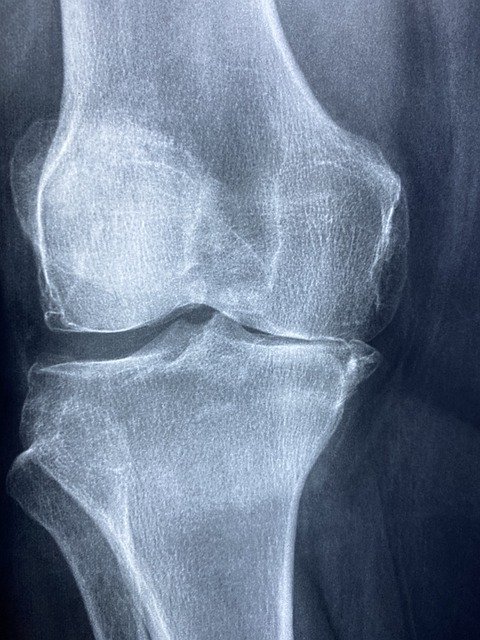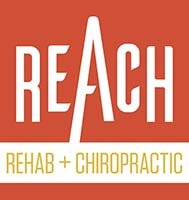Is Arthritis the reason I hurt?
Are you experiencing aches and pains that just seemed to appear out of nowhere? Do you think it is because you are getting older?
Aches and pains are a common occurrence throughout life. So why is it that once we hit a certain age, we have the conception that “arthritis finally caught me.”
Don’t get me wrong, arthritis can be a contributing factor to the pain and stiffness that we experience in our joints, but is it the primary cause of our symptoms? Not always, in fact, you can have a severely arthritic joint and be experiencing no pain at all!
So, what the F*#% is the deal?
In this article, I’ll shed some light on the manner and give you a glimpse of how our REACH doctors approach the ye ol’ arthritis.
What is Arthritis?
First, it is important to note that when we are talking about arthritis in this article, we are specifically talking about osteoarthritis.
Osteoarthritis (OA), otherwise known as Degenerative Joint Disease, is the most common form of arthritis and is defined as non-inflammatory degeneration of joint cartilage. Osteoarthritis can occur in any joint in the body and is commonly associated with “wear and tear.” OA occurs most in weight-bearing joints, such as the spine, hips, and knees, and overuse joints, like the joints in our hands.
“I’ve had this pain for years, my physician took some X-rays, and they told me I have “degeneration.”
Well, did you know arthritis is a natural process that occurs as we age? It sounds scary, especially when you use the term, Degenerative Joint Disease. But arthritis is as natural as gray hairs and wrinkles. You can think of gray hair and wrinkles as degenerative hair disease or degenerative skin disease. It may sound more intimidating, but it is still natural.
“But, I’ve been told my knees are “bone on bone,” which has to be the reason I’m in so much pain.”
Just because you were told you have a joint that is “bone on bone,” does not mean you call an orthopedic surgeon to get a knee replacement the following week. Conservative care, such as rehab and chiropractic, are highly effective first-line treatments for joint pain and stiffness.
DISCLAIMER: Now, I’m not saying that all cases involving arthritis aren’t serious and that you should swipe it under the rug. Many patients, with severe arthritis, have major success after an arthroplasty (joint replacement). I’m simply letting you know that it is okay to have “degenerative” changes. I’m also suggesting surgery is not a great first option for joint pain and stiffness because many cases can be resolved with exercise and hands-on care, opposed to going under the knife first.
Is Arthritis Causing My Pain?
It is important to realize that not all pain in, or around a joint is a result of arthritis.
Commonly, pain or discomfort in the spine, hips, or knees can be caused by a joint derangement. A joint derangement is an interference of normal joint mechanics, caused by certain movements, postures, or positions, that can lead to pain and discomfort around a joint.
How so?
If a joint isn’t moving properly, the nerves and soft tissues around the joint can become sensitive. This can result in aches and pains during simple movements or while maintaining everyday postures and positions.
“Wait, if my joints aren’t moving properly, how isn’t that because of my arthritis?”
Arthritis can affect normal joint mechanics over time. Therefore, as I stated above, arthritis is a contributing factor but not the primary reason for the symptoms.
“But how can I restore normal joint movement if I have arthritis?”
If your joint structure changes over time, then your normal ranges of motion will change over time as well. You may not be able to regain the range of motion that you had in your 20’s, but you can still move pain-free within your current ranges of motion.
How do I know if I have Arthritis?
How arthritis is diagnosed
An X-ray of a joint is the most common form of testing to confirm if you have arthritic changes.
However, an X-ray is a static image and does not tell us how you move. A proper physical exam by a musculoskeletal specialist could determine the severity of your arthritis as it pertains to movement.
Common physical signs or symptoms of arthritis are:
- Pain or achiness (more common in the morning time)
- Joint stiffness
- Decreased range of motion (decreased flexibility)
- Joint swelling
- Crepitus (popping or clicking sounds)
“I have several of these symptoms above. Maybe arthritis is the cause of my symptoms.”
Well, here are the common physical signs or symptoms of a joint derangement:
- Pain or achiness (usually activity-dependent)
- Joint stiffness
- Decreased range of motion (decreased flexibility)
- Joint swelling
- Crepitus (popping or clicking sounds)
Commonly, joint derangements are slapped with an arthritis label and are never examined and treated properly. Joint derangements can become chronic and can eventually lead to arthritic changes. That is why it’s important to rule out a derangement when dealing with joint pain.

Above is an X-ray of a knee with mild-moderate arthritic changes.
What can I do about my Arthritis?
If your pain or discomfort is a direct result of arthritis, then the best course of treatment is through movement or exercise.
Have you heard the sayings: “Movement is Medicine;” or, “Move it or Lose it;” or my personal favorite, “Moving is Grooving?”
Even though arthritis is known as the “wear n tear” arthritis, it is well researched that the less you move your joints, the greater risk you have of developing degenerative changes. The more we move our joints, especially through their full ranges of motion, the more nutrients we feed our cartilage.
Think of our synovial fluid, or fluid in the joint, as lubrication. The more you move, the more lubrication that is spread along the joint surface, which leads to better movement quality and less stiffness.
Exercises that are prescribed for treatment are directly related to the joints that are involved. So, treatment can vary but the principles of movement are the same for every joint in the body.
The use of supplements has also shown to improve the symptoms of joint pain and stiffness. For supplements that we recommend for arthritis and other conditions, visit our Fullscript dispensary.
When should I seek treatment?
General exercise programs are a great way to increase the strength and mobility of joints. It is important to note that you are not going to damage yourself by moving more often.
If general exercise does not seem to help your symptoms, or even makes them worse, then you should seek guidance from a medical professional specializing in musculoskeletal care. A trained MDT clinician can identify if your symptoms are directly related to your arthritis or if there is biomechanical interference (joint derangement) leading to the overuse of the surrounding soft tissue structures of the joint.
Proper classification of the source of the symptoms is needed to ensure what specific treatments should be used. A clinician trained in Mechanical Diagnosis & Therapy (MDT) is primed to identify and treat conditions such as arthritis.
At REACH, we use a holistic chiropractic approach, assessing the body as a whole rather than treating just the symptoms. MDT is the tool we use to identify the source, so proper treatments can be administered.

